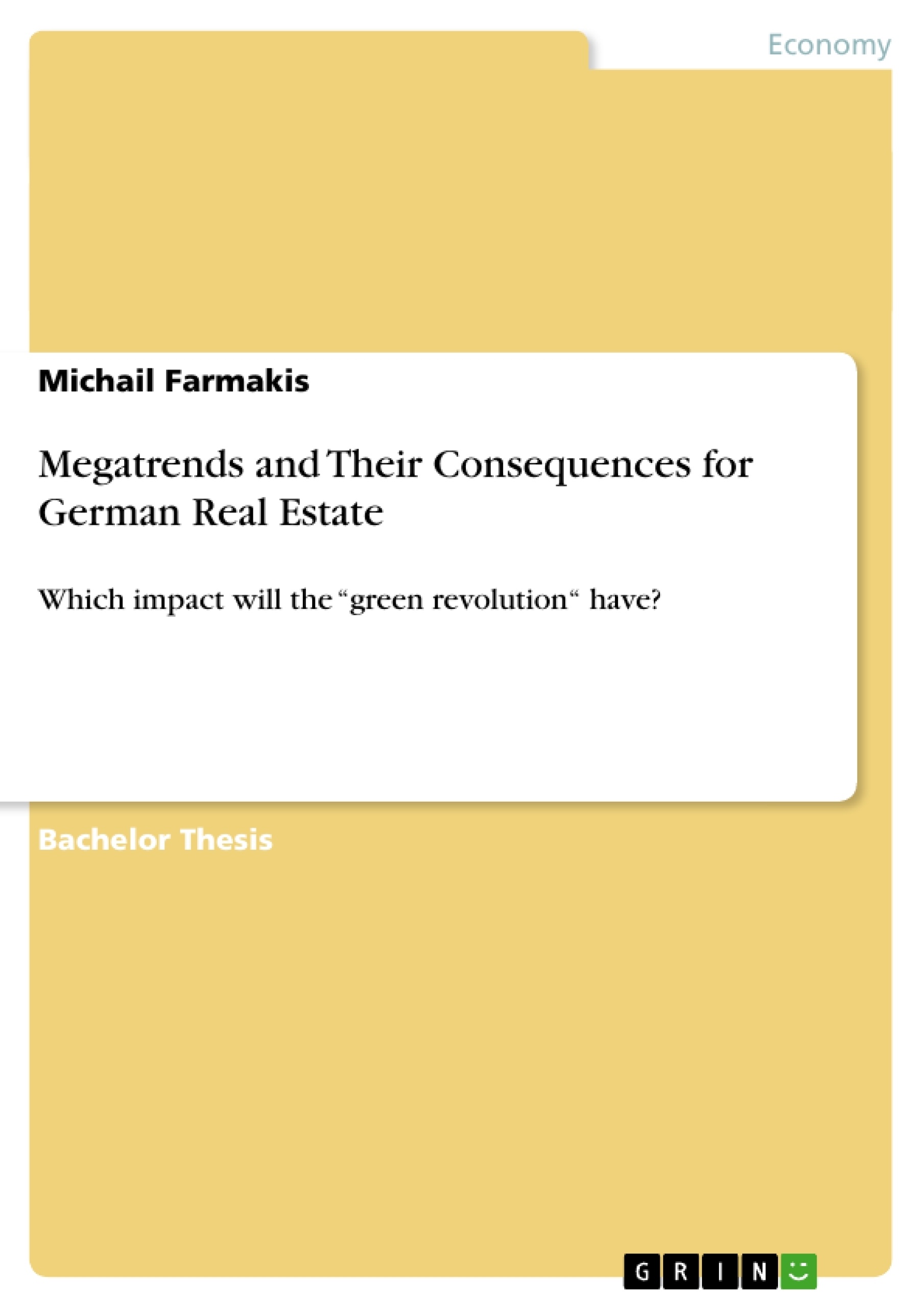At the beginning of 2009, the owner of the Empire State Building unveiled his plan to “go green”. The world famous skyscraper was completed in 1931 in New York, USA. The Art Deco building is currently in the midst of a $500m renovation, where $100m of these funds are designated for the green initiative. The green renovations are expected to decrease energy expenditures by 38 percent or $4.4m annually (Jonas, 2009).
The example of the Empire State Building is not unique, since increased environmental awareness has affected nearly every industry. Companies across all industries and nations have launched green initiatives in order to improve their environmental performance and in response to the expressed concerns regarding their immediate environment. Currently, corporations compete to adopt and implement sustainable policies.
Particularly the role of the real estate industry in reducing the environmental burden is considered to be the most important, as this industry is one of the largest emitters of harmful chemical substances and a major user of natural resources (Nelson, 2007, p. i). However, it is not enough to consider only the ecological aspects of real estate. This is because real estate, as a commodity, has an enormous economical impact. Other dimensions including economic and social aspects must also be examined.
The term sustainability unites the three relevant dimensions. Over the last 20 years, bringing environmental protection to the same level as economic development and social concerns, sustainability has become a worldwide guiding principle. Sustainable development takes the future of mankind into account (Grunwald & Kopfmüller, 2006, p. 7). In the context of global challenges, sustainability means ensuring the addressing of future generation’s needs. In contrast to other industries, the real estate industry has been slow to develop sustainable practices. However, today, the idea of sustainability greatly influences actions and motivations associated with the real estate industry. Efforts to create sustainability in real estate are reflected in the names of a large number of the development of building labels, including Green Buildings, Sustainable Buildings, or Zero Emission Buildings. In Addition, more and more developers, architects, engineers, property owners, and lenders consider sustainability issues when planning, constructing, renovating, or living on property.
Inhaltsverzeichnis (Table of Contents)
- 1 Introduction
- 1.1 Problem Definition and Objectives
- 1.2 Course of Investigation
- 2 Fundamentals and General Framework
- 2.1 Megatrends, Sustainability, and Green Buildings
- 2.2 German Real Estate Industry
- 3 Factors of Green Building Movement
- 3.1 Global Change and the Need to act
- 3.2 Media, Policy, and Culture
- 3.2.1 Layers of implementation
- 3.2.2 Media and Public Relations
- 3.2.3 Culture
- 3.3 Impacts of Green Building on Economical, Ecological, and Social Factors
- 3.4 Legal Framework and Certificates
- 3.4.1 Germany's Legal Framework
- 3.4.2 LEED
- 3.4.3 DGNB
- 3.4.4 National and International Norms
- 3.5 Demand and Barriers
- 3.6 Summary
- 4 The German Real Estate Market
- 4.1 Macro Analysis
- 4.2 Possibilities of Energetic Renovations Using the Example of an One Family House
- 4.3 Adaption to Existing Buildings
- 4.4 Past Trends
- 4.5 Future Implications
- 4.6 International Settlement
Zielsetzung und Themenschwerpunkte (Objectives and Key Themes)
This thesis analyzes the impact of the "green revolution" on the German real estate market. It examines the fundamentals of megatrends, sustainability, and green buildings in the context of the German real estate industry. The work delves into the factors driving the green building movement, including global change, media influences, and cultural shifts. It also explores the economic, ecological, and social impacts of green building practices, the legal framework surrounding these practices, and the demand for and barriers to their implementation. The key themes explored in this work include: * **Megatrends and Sustainability:** The role of sustainability and environmental considerations in shaping real estate development. * **Green Building Movement:** The factors driving the movement towards green building practices. * **Impact of Green Building:** The economic, ecological, and social consequences of implementing green building strategies. * **Legal Framework:** The legal regulations and certifications that govern green building in Germany. * **German Real Estate Market:** The current state and future implications of the green building movement for the German real estate market.Zusammenfassung der Kapitel (Chapter Summaries)
- Chapter 1: Introduction introduces the topic and outlines the research objectives. The chapter defines the problem of the impact of the green revolution on German real estate and sets out the course of investigation.
- Chapter 2: Fundamentals and General Framework explores the conceptual foundations of megatrends, sustainability, and green buildings within the context of the German real estate industry.
- Chapter 3: Factors of Green Building Movement examines the driving forces behind the green building movement, including global change, media and public relations, and cultural influences. The chapter explores the impact of green building on economic, ecological, and social factors. It also delves into the legal framework governing green building practices and the demand for and barriers to implementation.
- Chapter 4: The German Real Estate Market focuses on the current state and future implications of green building for the German real estate market. It examines the market from a macro perspective and provides examples of energetic renovations.
Schlüsselwörter (Keywords)
This thesis explores the impact of the green revolution on the German real estate market, focusing on key concepts such as megatrends, sustainability, green buildings, legal framework, and the German real estate industry. The work examines the drivers and impacts of the green building movement, analyzing its economic, ecological, and social implications. Key terms include: green buildings, sustainability, megatrends, legal framework, German real estate, demand, barriers, and energetic renovations.- Arbeit zitieren
- Michail Farmakis (Autor:in), 2010, Megatrends and Their Consequences for German Real Estate, München, GRIN Verlag, https://www.grin.com/document/151844



